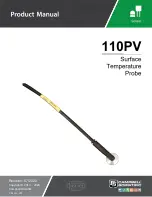
Document Conventions
This guide uses the System
e
International (SI) and the
Microsoft
®
Manual of Style
as a basis
for styles and conventions.
The following typographic conventions are used throughout this manual.
Bold
face is used for:
–
Names of software program menus, editors, and dialog boxes; also for the names of
menu commands, keyboard keys, icons and desktop shortcuts, and buttons and
fields in editors and dialog boxes
–
Names of hardware components
–
User input that must be typed exactly
Italic
face is used for:
–
Emphasis
–
Cross-references to sections, figures and tables within this manual and for titles of
other documents
–
File and directory names; examples of directory paths are generally given in the
Windows form
–
Placeholders for user input that is specific to the user. May also include angle
brackets around the placeholder if the placeholder is already in italic text. For
example, c:\<
product
>\product.def
–
References to a setting or field value shown
The software-related procedures in this guide are based on using a computer running
Windows
®
XP. Some steps and dialog boxes may vary slightly if you are using another version
of Windows.
Safety words and definitions
Before attempting to install or use the device, review all safety indicators in this document to
help prevent injury, equipment damage or downtime.
The following safety and equipment symbols are used in this document:
Indicates a hazardous situation which, if not avoided, will result in death
or serious injury.
Indicates a hazardous situation which, if not avoided, could result in death
or serious injury.
Indicates a hazardous situation which, if not avoided, could result in minor
or moderate injury.
Indicates practices that are not related to personal injury.
Summary of Contents for DMC490
Page 6: ......





































